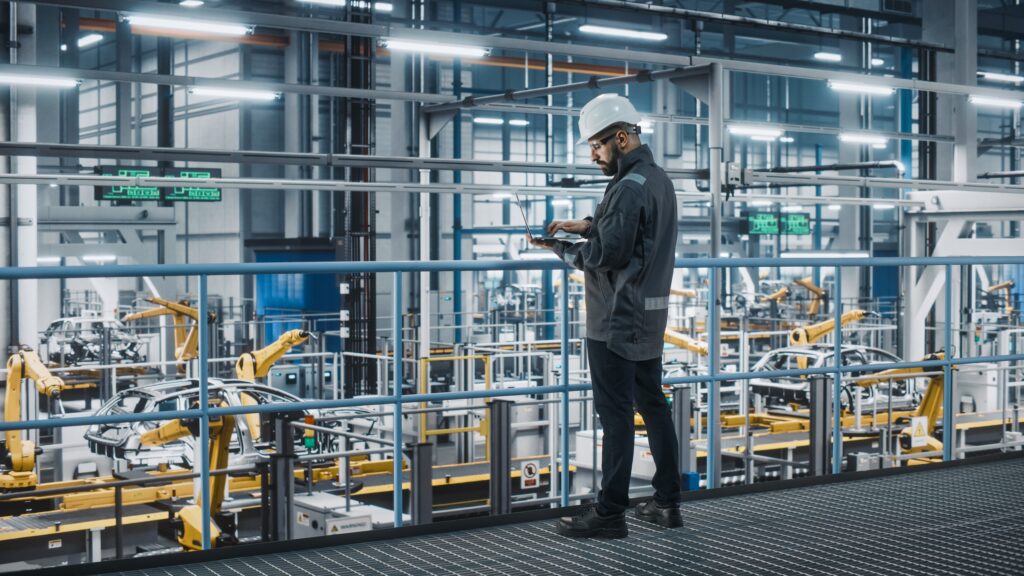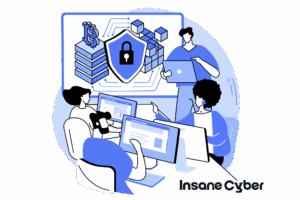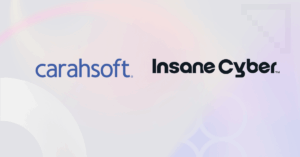ICS vs. IT Security: Why Your IT Playbook Won’t Work on the Factory Floor
Industrial Control Systems (ICS) are the unsung heroes of modern life. They are the digital backbone of our most critical infrastructure, from the power grids that light our homes to the manufacturing plants that build our cars.
But as these systems become more connected, they also become prime targets for cyberattacks. The problem? Many organizations are still trying to protect them with standard IT security strategies, and it’s a recipe for disaster.
This article will break down the fundamental differences between Information Technology (IT) and Industrial Control System (ICS) security. We’ll explore the unique challenges of defending operational technology (OT) and provide a clear roadmap to building a more resilient defense.
What Are Industrial Control Systems Anyway?
Before we talk about securing them, let’s clarify what we’re dealing with. Industrial Control Systems (ICS) are the combination of hardware and software that monitor and command physical processes. Think of them as the central nervous system of an industrial operation. This includes:
- Supervisory Control and Data Acquisition (SCADA) systems: For monitoring and controlling assets over large geographical areas, like a water pipeline.
- Programmable Logic Controllers (PLCs): Ruggedized computers that automate specific processes, like the movement of a robotic arm on an assembly line.
- Distributed Control Systems (DCS): For managing complex, process-oriented facilities like a chemical plant or refinery.
Unlike IT systems, which are all about data—storing it, sending it, and protecting it—ICS systems are all about action. They interact with the physical world, opening valves, regulating temperature, and keeping the lights on. This fundamental difference changes everything when it comes to security.

The Core Conflict: 9 Key Differences Between IT and ICS Security
Trying to apply IT security rules to an ICS environment is like trying to use a city map to navigate a jungle. The terrain is completely different. Here’s why.
1. The Golden Rule: Availability is King
- In IT Security: The top priorities are Confidentiality and Integrity. The main goal is to protect data—customer records, intellectual property—from being stolen or altered.
- In ICS Security: The undisputed top priority is Availability. An hour of downtime on a corporate network is an inconvenience; an hour of downtime at a power plant is a public safety crisis. Any security measure that risks halting operations is a non-starter. A cyber incident that causes a malfunction can lead to environmental damage, production loss, or even physical harm to employees.
Why Confidentiality and Integrity Still Matter
That’s not to say ICS environments ignore confidentiality and integrity. It’s just that they’re not always front and center. For example, protecting data from being changed while it’s stored or transmitted—integrity—is critically important, especially when a rogue command could shut down a city’s water supply or spin a turbine out of control. However, if a patch or update introduces any risk of downtime, it’s often delayed or rejected outright in favor of operational continuity.
In short:
- IT systems are built to protect data;
- ICS systems are built to protect uptime and safety—even if it means living with some risk to data confidentiality or integrity.
2. System Lifespan: Decades vs. Years
- IT Systems: Most IT hardware is refreshed every 3-5 years. Software is patched weekly, and updates are routine.
- ICS Environments: These systems are built to last, often operating for 20-30 years with minimal changes. You might find a critical controller running on Windows XP—not because of neglect, but because it’s stable, and the “if it ain’t broke, don’t fix it” mantra is a core principle of operational safety. Patching is a high-stakes event that requires extensive testing and planned downtime, a luxury most critical facilities don’t have.
3. Change Management: Deliberate and Slow
In the IT world, speed and agility are celebrated. Rolling out a new app or a weekly security patch is business as usual. In the ICS world, change is approached with extreme caution.
Every modification—from a simple software tweak to a network configuration change—is a potential risk to stability and safety. That’s why industrial environments are governed by strict change management protocols. Every proposed update must be rigorously reviewed, tested in a sandbox environment, and approved before it ever touches the live system. This deliberate pace is a feature, not a bug, designed to ensure continuous, safe operations.
Granular Security in Practice
Applying security in these environments isn’t just about the big changes—it’s about sweating the small stuff, too. Security measures are often applied directly to individual elements of the ICS. That can mean:
- Blocking unused ports to reduce the attack surface,
- Installing security patches only after painstaking validation,
- Enforcing least-privilege principles so only those who absolutely need access can reach critical controls.
Here, even what would be a routine IT fix—a quick port close, a minor patch—is a carefully orchestrated event. The stakes are high, and the margin for error is razor-thin. In ICS, “slow and steady” isn’t just a mantra; it’s a survival strategy.
4. Network Design: Static and Purpose-Built
- IT Networks: These are dynamic and sprawling. They’re built for speed and connectivity, often with thousands of devices coming and going. Tools like DHCP (which automatically assigns IP addresses) and widespread Wi-Fi are essential for keeping things running efficiently.
- ICS Networks: These are intentionally static and small. They were traditionally “air-gapped” (physically isolated) from IT networks for security. While IT/OT convergence is changing this, the internal philosophy remains.
- No DHCP: IP addresses are assigned manually (static addressing) because operators need to know with 100% certainty which device is which. Predictability is paramount.
- Limited Wi-Fi: Wireless networks can be prone to interference from heavy machinery and introduce security risks. Hardwired connections are the standard for reliability.
- Proprietary Redundancy: To guarantee uptime, ICS networks often use specialized, vendor-specific redundant connections. If one network path fails, a backup lane instantly takes over, ensuring the process never stops.
5. Remote Connections: A New Frontier of Risk
The push for remote operations has introduced new vulnerabilities. Connecting remote input/output (I/O) devices over the internet, cellular networks, or VPNs extends the attack surface far beyond the plant floor.
When industrial data travels across these external networks, it can be intercepted or manipulated. An attacker could exploit an insecure remote connection to gain a foothold in the operational environment. Securing these links with strong encryption, multi-factor authentication, and constant monitoring is no longer optional.
6. Internal Threats: When the Danger Comes from Within
If robust change management and static networks are the fortress walls of ICS, internal threats are the gatekeepers who might accidentally—or intentionally—open the door. The challenge? Many ICS environments still operate without granular authentication controls. Once someone is granted access, that access can extend much farther than intended.
This means the actions of a single rogue or careless insider—think a contractor with broad credentials or an operator whose account has been compromised—can ripple across multiple machines or entire production lines. The stakes are high:
- Widespread Impact: Because controls are interconnected and permissions broad, one person can inadvertently (or deliberately) halt operations, disrupt processes, or even tamper with safety-critical systems.
- Rapid Data Theft: Internal access can make it shockingly easy to siphon off equipment recipes, production data, or proprietary algorithms, especially if those databases aren’t locked down with layered permissions.
- Malware Introduction: An insider with the wrong intentions—or one who falls for a phishing email—can introduce ransomware or other malicious software, threatening the entire production environment.
In short, the combination of long-trusted personnel, limited internal controls, and highly sensitive operations makes internal threats far more than a theoretical risk. It’s another reminder that in ICS, security is as much about managing people as it is about securing machines.
7. The Attack Surface and Its Impact
- A Successful IT Breach: This usually leads to data theft, financial loss, or reputational damage. The consequences are serious, but often recoverable.
- A Successful ICS Attack: This can have kinetic, real-world consequences. We’re talking about physical infrastructure damage, environmental disasters, and threats to human life. The 2021 Colonial Pipeline ransomware attack, which caused fuel shortages across the U.S. East Coast, was a stark reminder of how a digital threat can cripple the physical world.
8. The People and the Skills
- IT Security Pros: These experts are trained to fight phishing, malware, and data breaches. Their tools are firewalls, endpoint detection, and SIEMs.
- ICS Security Pros: This role requires a hybrid expert who understands both cybersecurity and industrial engineering. They need to know how industrial protocols like Modbus and DNP3 work and how a digital command could cause a physical turbine to over-spin or a pipeline to rupture.
9. Human Error: The Sleeper Threat
Even with all the technical safeguards in place, people remain both the strongest asset and the weakest link in ICS security. Simple mistakes—misconfiguring a PLC, incorrectly programming a relay, missing a critical alarm in the control room—can have outsized ripple effects.
Often, these errors happen when team members step outside their usual roles, perhaps covering for an absent specialist. Without deep familiarity with the intricacies of specific machines or protocols, a small oversight—an incorrect setting here, a skipped verification step there—can cascade into costly downtime or, worse, unsafe conditions.
In a world where predictability and precision rule, even a well-intentioned misstep can open the door to security incidents, production losses, or physical hazards. That’s why robust training, clear procedures, and a healthy respect for “double-checking the details” are as crucial as firewalls or network segmentation.

A Blueprint for Stronger ICS Security: Best Practices
Protecting your industrial environment requires a purpose-built strategy. Here are five best practices to get you started.
Adopt a Dedicated ICS Security Framework: Don’t reinvent the wheel. Use established frameworks like the NIST Cybersecurity Framework (CSF), ISA/IEC 62443, or the MITRE ATT&CK for ICS to guide your risk assessments and security controls.
- What Is NIST SP 800-82 and Why Does It Matter?
If you’re serious about ICS security, you can’t afford to ignore NIST Special Publication 800-82. Developed by the National Institute of Standards and Technology, SP 800-82 is the gold standard for securing industrial control systems. Think of it as a detailed playbook packed with actionable guidelines—covering everything from risk assessment to network architecture and ongoing monitoring.
Why is it essential? Because unlike generic IT security frameworks, NIST SP 800-82 zeroes in on the unique needs of OT and ICS environments. It recognizes that protecting a manufacturing plant, a water treatment facility, or a power grid requires specialized controls and language. The document breaks down specific threats, proven defense strategies, and practical steps organizations can take to minimize risk—making it a go-to resource for anyone responsible for critical infrastructure.
In short, following NIST SP 800-82 helps bridge the gap between IT and OT, ensuring both camps are working from the same playbook when it comes to safeguarding equipment, data, and, most importantly, human safety.
- Understand the ANSI/ISA A99 Standard
When it comes to establishing strong security in industrial environments, the ANSI/ISA A99 standard plays a pivotal role. Developed by the American National Standards Institute and the International Society of Automation, this framework is specifically designed for the unique challenges of industrial control systems (ICS).
The ANSI/ISA A99 standard offers:- Guidelines for Secure Automation: It focuses on best practices and technical requirements for securing automated processes within industrial settings.
- Integration with Existing Security Models: The standard helps bridge IT security principles with the operational realities of the plant floor, making it easier for organizations to adopt robust, unified security measures.
- Support for Interoperability: By outlining methods for safe interactions between control systems and business networks, A99 ensures smoother, more secure integration—critical as organizations push toward greater automation and remote management.
Ultimately, ANSI/ISA A99 helps create a common language and set of expectations for organizations managing complex industrial environments. Following its recommendations sets a solid foundation for defense-in-depth and helps ensure that automation advances don’t come at the expense of cybersecurity.
- Implement Strict Network Segmentation: Create a buffer between your IT and OT networks. Use firewalls and demilitarized zones (DMZs) to create secure boundaries. Isolate critical control networks on their own private subnets to prevent unauthorized traffic and lateral movement by attackers.
- Deploy Continuous OT Monitoring: You can’t protect what you can’t see. Use specialized tools designed to understand ICS protocols. Anomaly detection and intrusion detection systems (IDS) tailored for OT can help you spot suspicious behavior—like an unauthorized command to a PLC—before it causes damage.
- Bridge the IT/OT Divide: Your IT and OT teams can no longer operate in silos. Foster collaboration through shared goals, joint training exercises, and open communication. When everyone understands both worlds, your security posture becomes infinitely stronger.
- Secure and Limit Remote Access: Every remote connection is a potential doorway for an attacker. Ensure all remote access is protected by multi-factor authentication (MFA), routed through encrypted VPNs, and granted on a least-privilege basis. If a connection isn’t absolutely necessary, disable it.
- Develop a Robust Incident Response Plan
Even with strong defenses, incidents can—and will—happen. Your incident response plan should be more than a binder collecting dust. It needs to outline clear steps for detecting, containing, eradicating, and recovering from a security breach in your ICS environment. This means:
- Designating specific roles and responsibilities for your response team so there’s no confusion during crunch time.
- Crafting detailed playbooks for high-risk scenarios, such as ransomware hitting a control system or unauthorized commands to critical devices.
- Regularly running tabletop exercises and simulated attacks to practice response and coordination—because muscle memory matters under pressure.
- Ensuring your plan prioritizes rapid system restoration and the safety of personnel as much as technical recovery.
- Establishing clear lines of communication both internally (across IT, OT, and leadership) and externally (with vendors, law enforcement, and incident response partners), so you’re never scrambling in the dark.
Test, update, and refine this plan as your environment changes. The ability to bounce back from an attack often comes down to how well you’ve prepared in advance.
It’s Not a Competition—It’s a Collaboration
Securing industrial environments isn’t about choosing between IT and OT security. It’s about recognizing that they are two distinct but equally important disciplines.
By understanding the unique priorities, technologies, and risks of the industrial world, organizations can move beyond outdated security models. Protecting these systems is more than just good business—it’s a critical part of ensuring the resilience and safety of our national infrastructure.
Need help navigating the complexities of industrial cybersecurity?
Contact our experts today to learn how to build a security strategy that protects your operational technology from modern threats.
Click here to download our helpful PDF guide:








